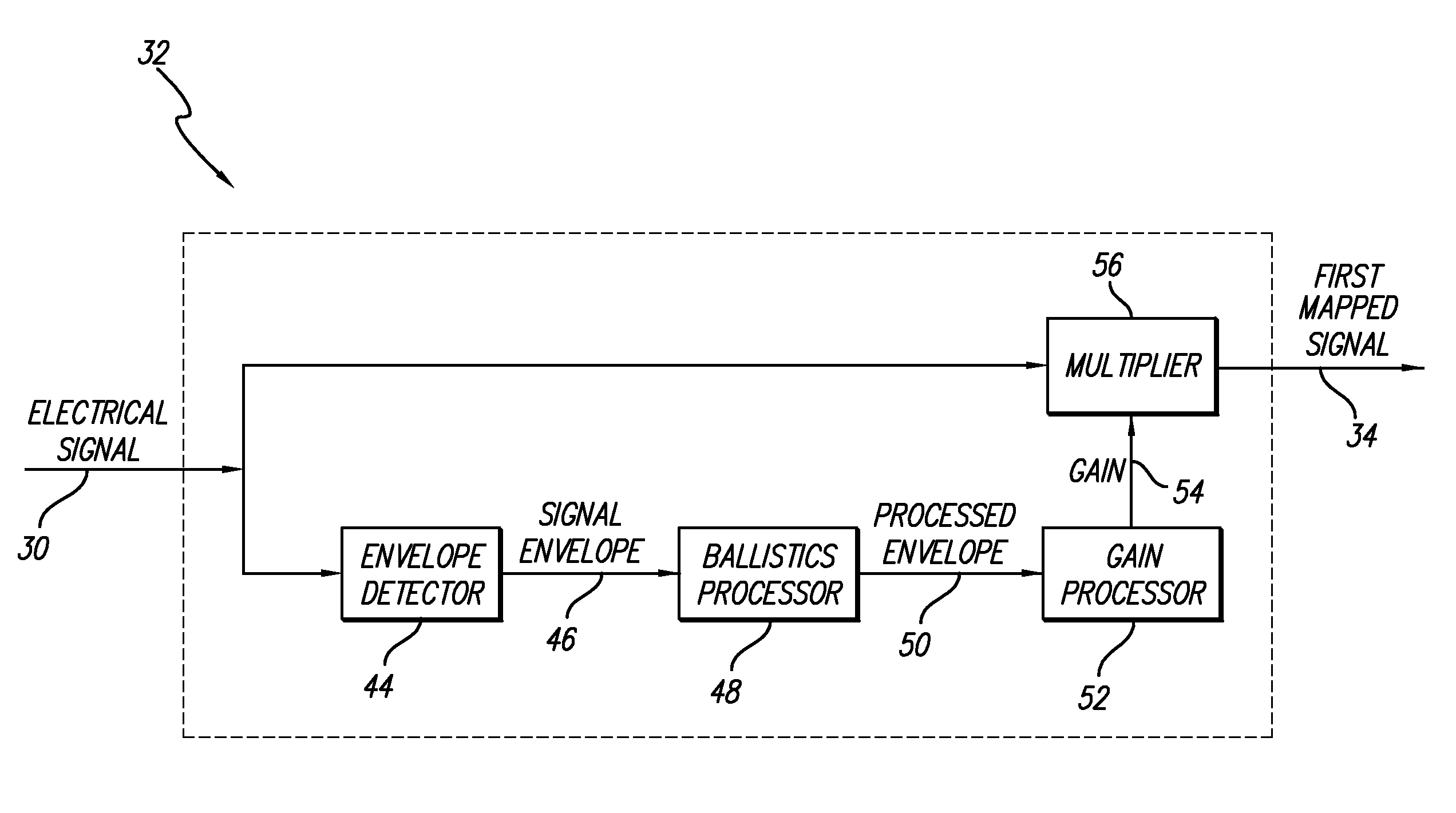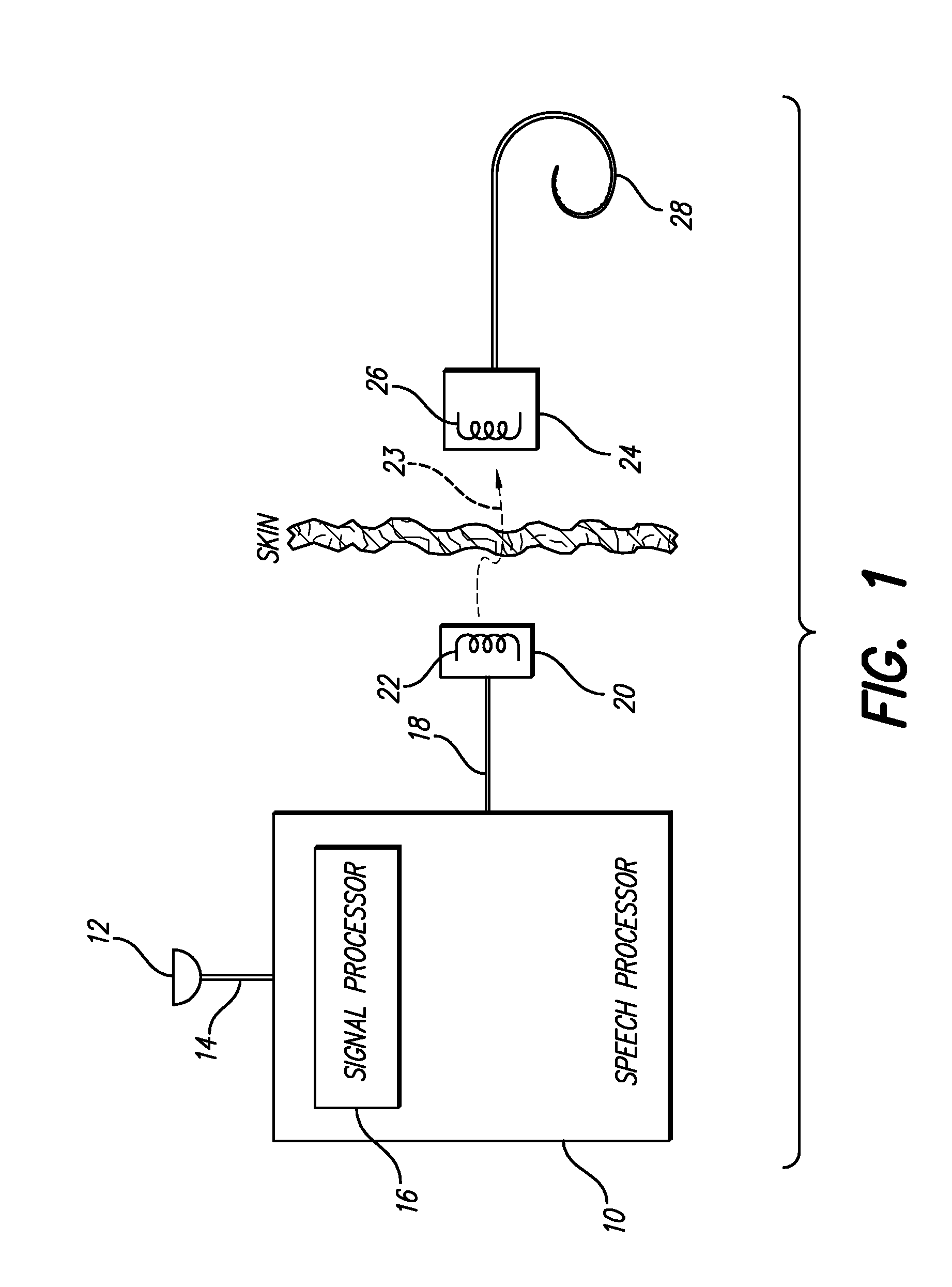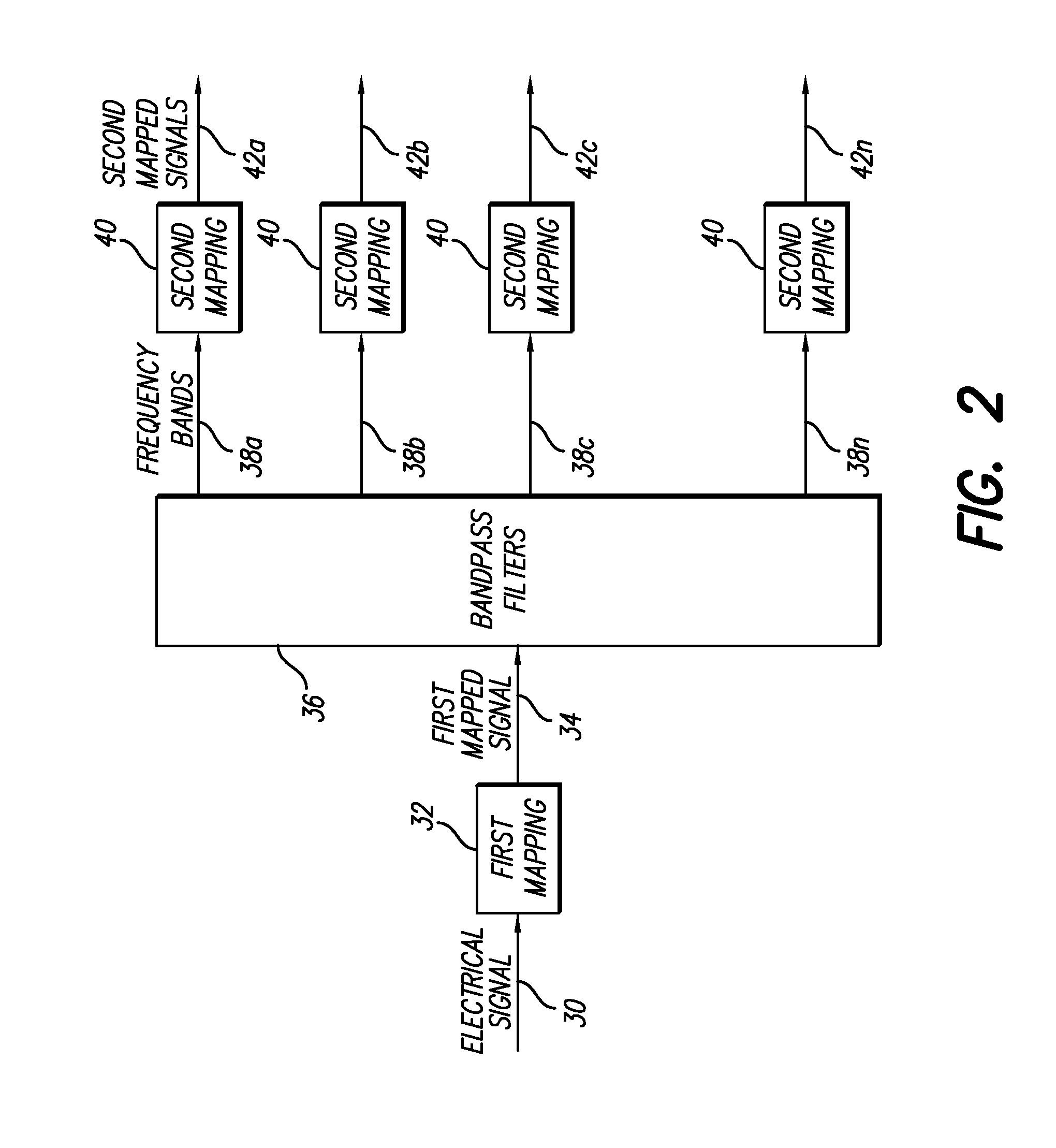Distributed compression amplitude mapping for a cochlear stimulation system
a compression amplifier and cochlea technology, applied in electrotherapy, therapy, etc., can solve the problems of conductive hearing loss, impeded normal mechanical pathways for sound to reach the hair cells in the cochlea, and deafness, so as to prevent distortion, reduce compression, and reduce the smearing of low level components into neighboring channels.
- Summary
- Abstract
- Description
- Claims
- Application Information
AI Technical Summary
Benefits of technology
Problems solved by technology
Method used
Image
Examples
Embodiment Construction
[0020]The following description is of the best mode presently contemplated for carrying out the teachings of the present disclosure. This description is not to be taken in a limiting sense, but is made merely for the purpose of describing the general principles of the disclosure. The scope of the disclosure should be determined with reference to the claims.
[0021]The present disclosure provides a method for Distributed Compression Amplitude Mapping (DCAM) for Implantable Cochlear Stimulation (ICS) systems, or other neural stimulation systems. A preferred embodiment of DCAM distributes signal compression between a pre-bandpass linear compressive mapping function, and a post-bandpass non-linear compressive mapping function. The pre-bandpass mapping is implemented as a traditional fast audio compressor to prevent distortion that might result from a non-linear mapping, and in a preferred embodiment comprises an envelope detector, a ballistics processor, and a gain processor to compute a ...
PUM
 Login to View More
Login to View More Abstract
Description
Claims
Application Information
 Login to View More
Login to View More - R&D
- Intellectual Property
- Life Sciences
- Materials
- Tech Scout
- Unparalleled Data Quality
- Higher Quality Content
- 60% Fewer Hallucinations
Browse by: Latest US Patents, China's latest patents, Technical Efficacy Thesaurus, Application Domain, Technology Topic, Popular Technical Reports.
© 2025 PatSnap. All rights reserved.Legal|Privacy policy|Modern Slavery Act Transparency Statement|Sitemap|About US| Contact US: help@patsnap.com



